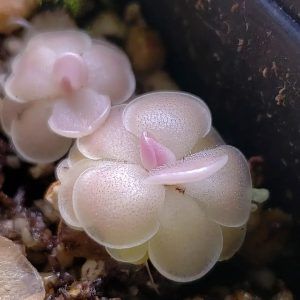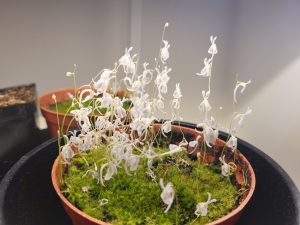Growing Carnivorous Plants Indoors
One question you may ask when growing carnivorous plants is “Can I grow carnivorous plants in my home?”. You are in luck! The answer is yes! However, it is essential to select the right plants and prepare for success! In this article we will go over which carnivorous plants that can grow indoors.
Best Types of Carnivorous Plants for Indoors in British Columbia

What kinds of carnivorous plants do well indoors? A few of our recommendations are listed here:
- Nepenthes
- Pinguicula
- Drosera
- Utricularia
Most of these plants can be grown effectively near a sunny windowsill! We keep a Drosera capensis in our kitchen in order to kill off some fruit flies in the summer while looking pretty! These plants (with the exception of Utricularia) also keep the number of fungus gnats down if you grow soil-based house plants. Seeing those annoying flies caught in the sticky dew of a Drosera or in the bottom of a Nepenthes pitcher is quite satisfying.
Considerations About Growing Carnivorous Plants Indoors

Some of our customers have had success growing Venus Flytraps and Sarracenia by windowsill but results can vary. One important aspect to remember is that light directly affects the growth rate of most plants.
Most plants will take an apparent dip in appearance and growth around times when light is scarce. This is especially true in Canada. It may be in your best interest to purchase a grow light: a compact fluorescent bulb or led grow light will do (not the cheap Amazon ones which won’t work). Sansi bulbs, Spider-Farmer, Kihung, Yescom, Marshydro, Sunblaster, or Feit Electronics are ones that we have personally used or have had associates use with good success. Grow lights allow many non-temperate species to grow their healthiest, fastest and largest year-round or can give plants a boost in a less-than-optimal light area.
We hope this helps you on your way to growing carnivorous plants indoors!be